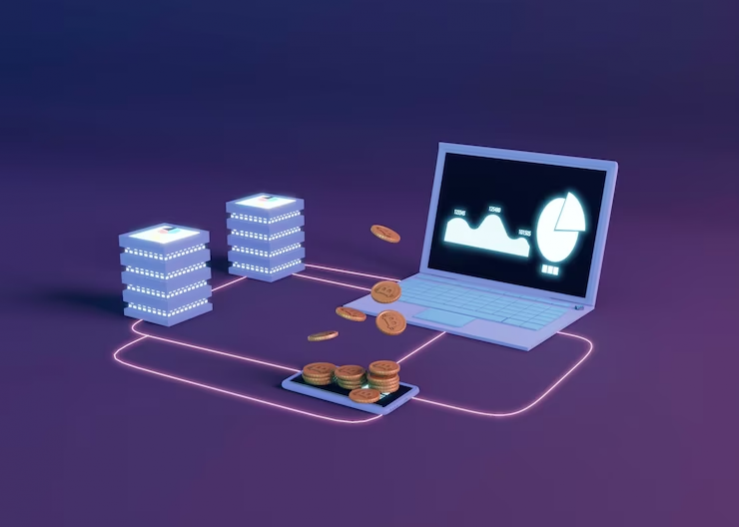Understanding the Basics of Blockchain

Blockchain is a revolutionary technology that has the potential to transform various industries, including finance, healthcare, logistics, and more. In this blog post, we will explore the basics of blockchain technology, its components, and how it works.
What is Blockchain?
Blockchain is a decentralized and distributed digital ledger technology that allows for secure and transparent peer-to-peer transactions without the need for intermediaries such as banks or financial institutions. In simple terms, it is a database that stores a record of digital transactions in a chain of blocks that are secured using cryptography. The technology was first introduced as a core component of Bitcoin, a cryptocurrency, but has since been applied to various industries beyond finance, such as healthcare, logistics, and supply chain management. Blockchain enables faster and more efficient transactions, reduces the risk of fraud and tampering, and enhances transparency and accountability.

Components of Blockchain

There are three main components of blockchain technology: blocks, nodes, and miners.
The main components of a blockchain include:
-
Blocks: A block is a collection of data that contains information about transactions, such as the sender’s address, the recipient’s address, and the amount transferred. Each block also contains a unique code called a “hash,” which is generated using complex mathematical algorithms.
-
Nodes: A blockchain node is a computer or device that is linked to the blockchain network.Nodes communicate with each other to verify transactions and create new blocks. Each node on the network has a copy of the entire blockchain, making it decentralized and transparent.
-
Miners: Miners are nodes that are responsible for adding new blocks to the blockchain. They use powerful computers to solve complex mathematical puzzles, which enables them to add new blocks and earn rewards in the form of cryptocurrency.
-
Consensus Mechanism: The consensus mechanism is a set of rules that all nodes on the network must follow to maintain the integrity of the blockchain. It ensures that all nodes agree on the current state of the blockchain and prevents any single entity from altering it.
-
Cryptography:The science of encrypting and decrypting data is known as cryptography. Blockchain uses various cryptographic algorithms to secure the data stored on the blockchain and prevent any unauthorized access or tampering.
These components work together to ensure that the data stored on the blockchain is secure, transparent, and tamper-proof.
How Blockchain Works
Now that we have covered the components of blockchain, let’s look at how it works.
-
Verification: Whenever a transaction is initiated on the blockchain, it is broadcasted to the entire network. The nodes then verify the transaction by checking the sender’s balance and ensuring that they have enough funds to complete the transaction.
-
Confirmation: Once the transaction has been verified, it is added to a block along with other verified transactions. The block is then broadcasted to the entire network for further confirmation.
-
Mining: Miners then use their computing power to solve complex mathematical puzzles to add the new block to the blockchain. The first miner to solve the puzzle and add the block is rewarded with cryptocurrency.
-
Consensus: To maintain the integrity of the blockchain, all nodes in the network must agree on the current state of the blockchain. This consensus mechanism ensures that no single entity can alter the blockchain.

Advantages of Blockchain

There are several advantages of blockchain technology, including:
-
Decentralization: Blockchain eliminates the need for intermediaries, such as banks or financial institutions, by allowing peer-to-peer transactions.
-
Transparency: All transactions on the blockchain are public, making the system transparent and secure.
-
Security: The use of cryptography and consensus mechanisms ensures that the data on the blockchain is secure and tamper-proof.
-
Efficiency: Blockchain enables faster and more efficient transactions, reducing the need for intermediaries and associated fees.
Conclusion
Blockchain is a revolutionary technology with the potential to transform a wide range of industries.. Its decentralized and transparent nature makes it secure and efficient, while eliminating the need for intermediaries. With the increasing adoption of blockchain technology, we are likely to see more innovative use cases emerge in the future.







